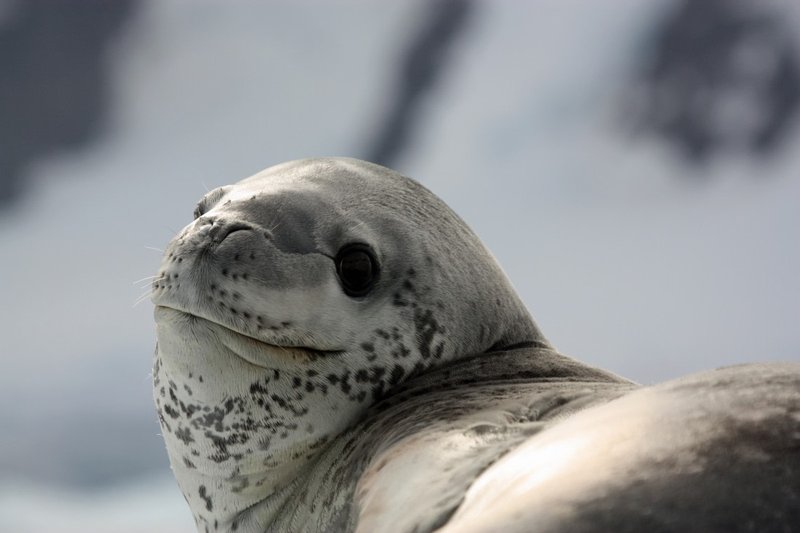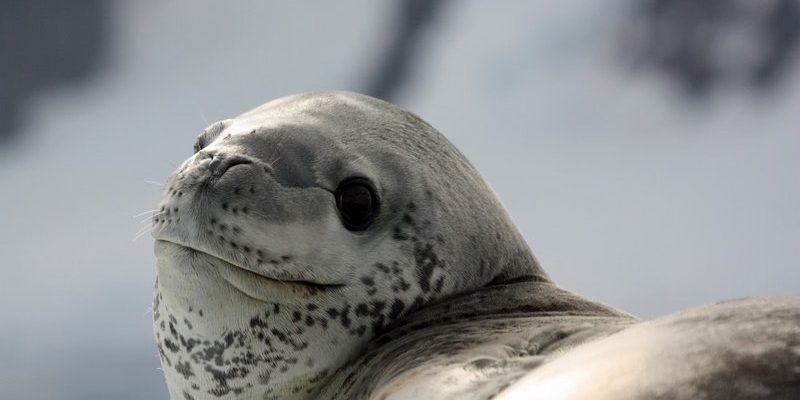
Leopard seals are not your average seals. They inhabit the cold, icy waters of the Antarctic and surrounding regions, where they exhibit behaviors and adaptations that make them stand out in the seal family. In this article, we’ll explore ten captivating facts about these remarkable creatures. From their diet to their unique social behaviors, you’ll discover just how interesting and complex leopard seals truly are. Grab a cup of coffee, and let’s get started!
1. Distinctive Appearance
Leopard seals are easily recognizable by their striking spotted coats, which resemble the fur of a leopard, hence their name. Their bodies can reach lengths of up to 10 feet and weigh between 440 to 1,200 pounds. This size allows them to thrive in the frigid waters of Antarctica, giving them both strength and agility as they hunt.
In contrast to their spotted backs, leopard seals have a more streamlined shape, making them incredibly efficient swimmers. Their long, slender bodies and powerful flippers enable them to chase down their prey with speed. Honestly, watching a leopard seal move through the water is like witnessing a perfectly choreographed ballet.
What’s interesting is that each leopard seal has a unique pattern of spots, much like human fingerprints. This individuality not only helps researchers identify specific seals but also contributes to their appeal in wildlife documentaries.
2. Apex Predators of the Antarctic
Unlike many other seal species that primarily feed on fish, leopard seals are fierce hunters known for their diverse diet. They primarily prey on krill, squid, and even other seals, including the adorable but less aggressive Weddell seal. When you think about it, that’s quite remarkable—imagine being at the top of the food chain in one of the harshest environments on Earth!
Leopard seals have powerful jaws filled with sharp teeth, enabling them to easily grasp and tear apart their prey. They often hunt alone or in pairs, displaying remarkable intelligence and strategy. For example, a leopard seal might use its speed to chase a group of krill or even dive down to surprise unsuspecting penguins.
Their hunting skills make them a vital part of the Antarctic ecosystem, maintaining the balance of marine life. Without these predators, the populations of their prey could explode, leading to imbalances that would ripple through the food web.
3. Unique Vocalizations
Have you ever heard a leopard seal’s call? It’s quite something! These seals are known for their wide range of vocalizations, which include growls, barks, and even surprising melodies that can echo through the icy waters. Researchers believe that these sounds play a critical role in communication, especially during mating seasons.
The vocalizations can be used to establish territory, attract mates, or communicate with other seals. Interestingly, some scientists liken the calls of leopard seals to musical notes, illustrating their unique place in the animal kingdom. Imagine standing on an icy shore, hearing these haunting calls echoing in the distance; it’s a surreal experience.
In addition to social calls, leopard seals can also make sounds while swimming, adding to their repertoire. These vocalizations provide insight into their behavior and social structures, revealing a level of complexity that many might not expect from marine mammals.
4. Remarkable Adaptations
Leopard seals have adapted brilliantly to their cold, icy habitat. Their thick layer of blubber not only provides insulation against frigid temperatures but also serves as an energy reserve during leaner times when food is scarce. This adaptation is vital, considering the harsh environment in which they live.
Their bodies are built for diving, equipped with specialized lungs that allow them to hold their breath for up to 15 minutes while hunting for food. A leopard seal can dive to depths of around 600 feet, showcasing their impressive adaptations to underwater life.
Their coloration also provides camouflage in the icy waters, helping them blend in with their surroundings. This ability to remain hidden is crucial for both hunting and avoiding predators, such as larger whales. Honestly, it’s a perfect example of nature’s ingenuity.
5. Reproduction and Parenting
Leopard seals typically mate in late spring to early summer. After a gestation period of about 11 months, females give birth to a single pup on ice floes. These pups are born around 3 feet long and weigh about 50 pounds. Can you imagine that tiny creature out there in such a vast, cold world?
The mothers are fiercely protective, nursing their pups for several weeks until they’re ready to venture out on their own. During this time, the pups learn essential skills, such as swimming and hunting. This nurturing behavior is a testament to the commitment these seals have to their young.
Interestingly, leopard seal mothers have been observed playing with their pups, demonstrating a more playful side to their otherwise fierce demeanor. This bonding time is crucial for the pups’ development, helping them learn how to navigate their challenging environment.
6. Social Behavior
While leopard seals are often solitary hunters, they do exhibit some interesting social behaviors. They can be seen lounging together on ice floes, basking in the sun. These gatherings can be quite social, with seals engaging in playful interactions and vocalizations.
However, they can also be territorial. During mating season, males will assert dominance through vocal displays and physical confrontations, showcasing their strength to attract females. Here’s the thing—while they enjoy socializing, they also know when to defend their space.
In some regions, leopard seals have been observed showing curiosity towards humans, often approaching research boats to investigate. This inquisitive behavior can be both charming and a reminder of the wild nature of these animals. It’s a fascinating glimpse into their personalities and adaptability.
7. Threats and Conservation
Like many marine animals, leopard seals face various threats due to environmental changes and human activities. Climate change and the melting of sea ice impact their habitats and prey availability, making survival increasingly difficult. Additionally, they can be affected by pollution and fishing practices that disrupt their food sources.
Organizations and researchers are working tirelessly to monitor leopard seal populations and advocate for conservation efforts. It’s essential to raise awareness about these incredible creatures and the challenges they face.
Conservation initiatives focus on protecting their habitats and promoting sustainable fishing practices. As we learn more about leopard seals and their needs, we can take steps to ensure their survival for future generations.
8. Fascination in Pop Culture
Leopard seals have made their presence known not just in the wild but also in popular culture. Documentaries showcasing their hunting prowess and unique behaviors have captured the imaginations of many. Films focusing on Antarctica often highlight these seals, contributing to a broader understanding of marine life.
Their striking appearance and fierce demeanor lend themselves to captivating stories, leaving audiences in awe of their beauty and strength. Honestly, who wouldn’t want to learn more about such an impressive creature?
Additionally, they’ve inspired artists and writers, appearing in various forms of media. Through these creative outlets, we gain deeper insights into their lives and the importance of protecting these incredible seals.
In conclusion, leopard seals are truly remarkable creatures with unique traits and behaviors that set them apart from other marine mammals. Understanding these cool facts helps us appreciate and protect them in their natural habitat. As guardians of the Antarctic, they play a vital role in the ecosystem, reminding us of the beauty and intricacies of the natural world. So next time you think about seals, remember the leopard seal and all its fascinating stories beneath the icy waters!

